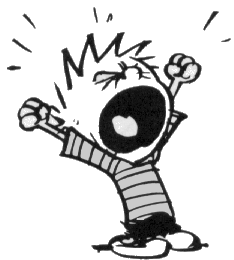Complete Agenesis of the Corpus Callosum (cACC) is a congenital birth defect in which there the complete absence of the corpus callosum. The corpus callosum comprises 800 million axons which both connecting and infiltrate the two hemispheres in the brain. These serve both to pass information between the two hemispheres and allow rapid and almost simultaneous processing of many brain regions concurrently. This is necessary for many of the brain's normal cognitive processes; among them, memory, socio-cognitive, the ability to recognize and process social cues and language, and many other higher brain functions. With DCCs (disorders of the corpus callosum,) this the largest single structure in the brain fails to develop normally during gestation. Often, the development of the fibers that would otherwise form the corpus callosum become longitudinally oriented within each hemisphere and form structures called Probst Bundles.
With recent improvements, including prenatal scanning, we know the numbers fall somewhere in between 1 in 2,053 and 1 in 3,00 individuals are born with a collosul disorder. Early on, they thought it to be less prevalent; that does not, however, mean there is a rise in DCCs. We have both become much better in our abilities to scan for DCCs, and we are now routinely scanning for these pre and postnatally; something rarely done until recent years. Currently in population studies, this makes these numbers a far more accurate representation.
Those born with a DCC fall within an entire spectrum of possibilities; from those whose lives can be truly challenging; with many hurdles and issues stemming from this congenital defect that, by addressing it early, can improve their quality of life. While others they may find they have some struggle through life, yet manage very well. They might never know until later in life they even had a DCC...or they might fall anywhere within these categories or elsewhere...
Myself? My diagnosis answered so many questions. The why, the who and the what of me. There was always a cognitive dissonance deep within. Never had I accepted the lies I was told; that I was 'cursed, bad, evil, lazy, no good,' and all that other trash talk... I knew there was a reason, that somehow I was truly different than others...I thought, saw, perceived the world, imagined and remembered things differently than others did, but I was none of those things. . The discovery of my DCC was my 'lightbulb,' my 'ahaa' moment.
Signs and symptoms of cACC and other callosal disorders vary among individuals. Some characteristics common in individuals with callosal disorders include vision impairments, low muscle tone (hypotonia), poor motor coordination, delays in motor milestones such as sitting and walking, low perception of pain, delayed toilet training, and chewing and swallowing difficulties.o much for technicalities...
I am just one such person, and everyone's experience of their DCC is different. My adult discovery of my cACC was the single biggest life-changing event. I want to share my experience with others so that they might learn about it, and to share my life's path to its discovery.
Laboratory research has demonstrated that individuals with ACC have difficulty transferring more complex information from one hemisphere to the other. Also, they will appear to exhibit cognitive disabilities (difficulty in complex problem solving) and social difficulties (missing subtle social cues), even when their Intelligence Quotient is normal. Recent research suggests that specific social difficulties may result from impaired face processing. The unusual social behavior in childhood is often mistaken for or misdiagnosed as Asperger syndrome or other autism spectrum disorders. Other characteristics sometimes associated with callosal disorders include seizures, spasticity, early feeding difficulties and/or gastric reflux, hearing impairments, abnormal head and facial features, and mental retardation.
Many are first diagnosed as autistic and then it is discovered that they had ACC, and had that diagnoses dropped, because they did not meet the DSM criteria for an autism diagnosis. Others like myself had that diagnoses given in addition to cACC (complete Agenesis of the Corpus Callosum.)
This disorder has been known about for a long time, yet is only now beginning to be researched as diagnoses requires a proper brain scan...until recently it was not an easily gotten diagnoses. I grew up with varied social, emotional and communications difficulties, and as a result from the age of 3 began the roller coaster of multiple failed diagnoses, a failure of the educational system to continue my average expected education, decades of social maladapted behavior, shame, guilt, and all out suffering.
Many of the symptoms associated with this disorder continue to plague adults throughout there lives, albeit we do learn to adapt and some thrive regardless. There has been little if no study at all of acollosul disorders until recent years for reasons noted above.
This site will express how I investigate disorder and its deeply rooted effects of my life, how learning about has changed and continues to change my life, and what I learn about myself. Hopefully it will benefit others out there that are dealing with this condition in themselves or a loved one.
While all of this is true you might question my choice for the title of my blog. Its simple really...I have always felt like two people in one body, fully aware of the other but not able to communicate, like two brains in one body...but my experience is that I am a whole human being, beginning to accept that my wholeness looks different than yours, perhaps, and I strive to no longer let this disability define me solely on its own basis.


